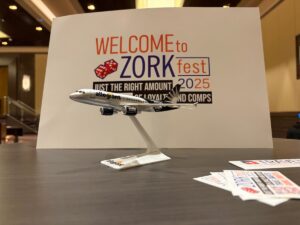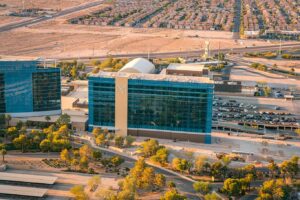
This is part one of a multi-part article that focuses on the growth of Atlanta’s major airport, ATL, Delta Airlines role in shaping its growth and strategic vision, and the often rewarding, often contentious role played by the General Managers of ATL.
The World’s Busiest Airport: ATL
Miguel Southwell, the General Manager of Atlanta’s Hartsfield-Jackson International Airport (ATL) was recently let go by Atlanta’s mayor, Kasim Reed. Even though the airport is technically not in the city of Atlanta, it’s general manager is hired by the city of Atlanta and his employment is subject to the approval of the mayor – meaning the mayor can unilaterally decide to fire you. ATL has an economic impact of nearly $35 billion on the Atlanta metro area and hosts around 63,000 jobs. ATL is ranked as the world’s busiest airport with total passenger volume of 101.5 million in 2015 and Delta, the world’s second largest airline, with 2015 revenues of $40.3 billion, is based in Atlanta. Everything that happens at ATL, the airport, has a direct effect on Atlanta, the city.
A Little History
I moved to Atlanta in 1978. I was working in the entertainment industry and Atlanta was starting to blow-up as a hot bed of musical talent, great clubs, killer concerts and a multitude of “next great things”. Nashville was the epicenter of Country Music, but Atlanta was the hub for much of the Southern Rock and R&B that came out of the South. All of the major labels had or were setting up offices here too, so if you went to any one of the many nightclubs that featured live music and had a good band playing, there were one or two talent scouts (A&R) checking out the talent. It was also a plus that the bars were open until 4AM and most of them let you take your drink with you when you left, as long as it was in a “Go Cup”.
It also helped that Atlanta had ATL. In 1971 the ex-mayor of Atlanta, William B. Hartsfield, died and what was then known as Atlanta Municipal Airport was renamed William B. Hartsfield Atlanta Airport. Later that year, Eastern Airlines started flying International routes out of ATL to Mexico and Jamaica, so they re-named it again – William B. Hartsfield Atlanta International Airport. By the time I got to town it was just called Hartsfield because, seriously, who’s got time to say all the rest of that nonsense when everybody knew what you meant as soon as you said, “Hartsfield”, anyway?
By 1978, Sabena started to fly in and out of the airport, adding European destinations for the first time. This was all before the deregulation of the airlines so Delta and Eastern existed side by side, sharing passengers as they flew about their business. On October 24, 1978, then President Jimmy Carter, a Georgia native, signed The Airline Deregulation Act removing government control over fares, routes and market entry of new airlines from commercial aviation. Things were about to get interesting at ATL and across the entire United States airline industry.

It’s 1980 and ATL handled 42 million passengers that year – Time for a New Terminal
Flying at this time was a very different kind of experience. If you used a travel agency, more often than not, your ticket was a handwritten affair. Only the airlines or the biggest agencies could afford a ticket printer. The airlines also had ticket offices scattered around town for your convenience. You could also call one of the airlines that served ATL on the telephone and get blank tickets or “scrip” sent to your business address. When you wanted to fly, you looked at the printed airline schedule, wrote down your flight information on the scrip, took it to the airport and presented it at the counter. Unless you really screwed things up, the ticket agents would take the scrip, look it over, tell you what the ticket cost, collected your money and gave you a printed ticket. If the ticket was provided by a recognized travel agency, you could skip going to the counter entirely.
When you drove to the airport, you found a parking spot with relative ease near the terminal, grabbed your baggage, walked up to the counter and checked your bags. It didn’t cost a thing, they usually didn’t go missing and it didn’t take very long to get them once you landed at your destination. Security? What security? At ATL you walked around in back of the ticket counters, picked which hallway your gate was on and just cruised on down to the gate. Flying was smoother than a ball bearing sliding through a greased groove.
Delta was also busy instituting major changes in their operations. They began adopting the hub and spoke structure that we’re all familiar with today. This was a major factor in Delta’s growth and help to build the airline for many years to come.

Mayor Maynard Jackson and His Powerful, Positive Influence on ATL
One day I headed to ATL for a business trip. I wasn’t a big follower of Atlanta news and politics. I was in my 20’s and life had a different set of priorities. As I approached the airport I noticed that the signs on the highway had changed. Whoa! What’s going on here? I took the new airport exit and drove up to an entirely new airport. Somehow they had built a whole new airport and I didn’t know a thing about it. It wasn’t actually a new airport. It was a new terminal, called the Midfield Terminal, as it was situated in between the runways whereas the old terminal was at the north end of the property with the runways all south of the building. While I was so busy not paying attention to what was going on, major changes were taking place that would propel ATL to global importance.
Maynard Jackson was elected Atlanta’s mayor in 1973. He was 35 years old and Atlanta’s first African American mayor. He was the right man in the right place at the right time. Two of his most important achievements while in office were instituting change that ensured minority participation in government funded projects from less than 1% to around 35% and spear heading the nearly $500 million project that resulted in the major expansion of ATL.
The midfield expansion was a certified “big deal” project. At $500 million it was the largest construction project in the Southern United States. The design was a collaboration between several architectural firms including Minority Airport Architects & Planners; a move consistent with Jackson’s plan to improve minority participation in local government projects. Here’s something you don’t seem to hear much nowadays – The project come in on time and under budget.
George J. Barry was the General Manager of ATL at the time of the Midfield project. He had served as the Chief Administrative Officer of the City of Atlanta during the transitional period that Maynard Jackson became mayor. His proven ability to manage during times of great change was asset that helped ensure the success of the ATL project.
So how smoothly did it all go? Consider this: They closed down operations at the old North Terminal one night, stopped all airline traffic for three hours and started up again at the new Midfield Terminal. There were no test flights, no airplanes taxied up to the new gates. They just switched. That’s crazy, right?
 Article from The Atlanta Journal / The Atlanta Constitution About the opening of the Midfield Terminal
Article from The Atlanta Journal / The Atlanta Constitution About the opening of the Midfield Terminal
The new terminal was a state of the art facility. The number of gates increased by nearly 100% from 72 to 138 and 99% of the gates had jetways that connected the gate directly to the aircraft. Capacity at opening was 55 million passengers per year and the planned additions would take it to 75 million. Parking capacity also increased 100% growing from 6,000 spaces to 12,000.
Mayor Jackson, working in close conjunction with Mr. Barry, had pulled off a major coup. ATL had grown to be a major hub for domestic and international air travel. It would bring more travelers and business to the Atlanta Metro Area and play a major role in Atlanta being chosen for the 1996 Olympics. All of this growth and popularity didn’t come without some difficulty. (The last sentence is an example of understatement.)
The next part of this article will cover the continued growth of ATL, the friction between Atlanta mayors and ATL general managers, Delta’s major role and influence at ATL and other developments leading up to the recent announcement of a change in leadership at the airport.
Part 2 coming soon.
Other Delta articles:
Delta Delays Growth Plans And Jet Delivery
Delta Airlines | Learning The Mileage Game
Delta Basic Economy Expands To International Markets: What You Need To Know
Delta Comfort Plus Product Changes For Customers
Delta Announces Ed Bastian as Retiring CEO Richard Anderson’s Replacement
Delta | Could Medallion Upgrades Potentially be Shifting to Delta Comfort+
Delta Same Day Travel Changes | Amazing Flexibility for Premium Class Travelers
BUMP! | A Talk About Airline Denied Boarding Including a Delta Experience | VDB & IDB
Steve has spent the last 35 years traveling around the world for both business and pleasure. He is a Delta Three Million Miler and has earned top tier elite status with multiple Airline and Hotel Programs. One year after a very long mileage run to Japan to qualify for Delta status, he decided to get serious about finding the best way to travel better for less and started building a portfolio of travel hacking tools and techniques. If there's good travel, hotels, food, wine, spirits and company to be had, there's a way to have it for less.













